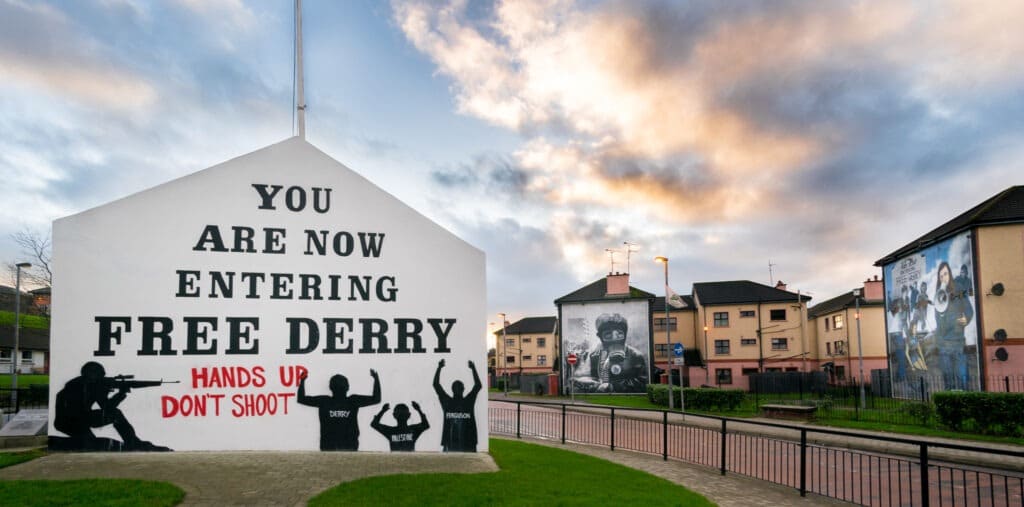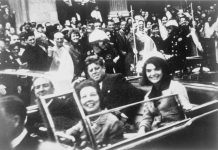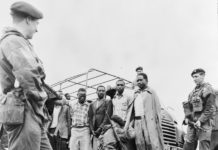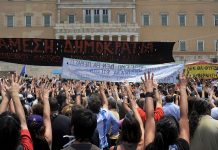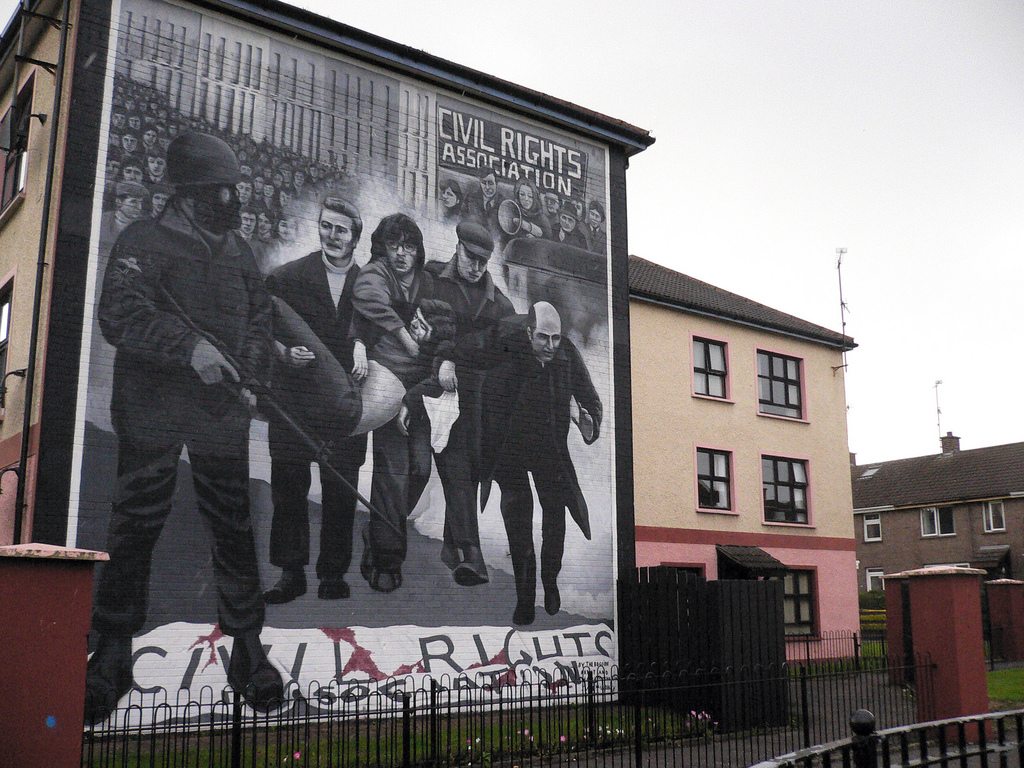
“Bloody Sunday” betegner den 30. januar 1972, da britiske tropper i Derry i Nordirland dræber 14 deltagere i en republikansk arrangeret borgerrettighedsmarch.
I juni 2010 blev den anden store rapport om begivenhederne færdig, ledet fra 1998 af Lord Saville, som konkluderer, at nedskydningerne var ubegrundede. Samme eftermiddag udlagde den britiske premierminister David Cameron rapporten i parlamentet og betegnede, at “hvad der skete Bloody Sunday ikke var retfærdigt og ikke kan retfærdiggøres … og var forkert.” (se klip nedenfor).
Leksikalt
- Den blodige søndag (Denstoredanske).
- Bloody sunday (Wikipedia.dk). Dansk Wiki-artikel med links til bl.a. længere engelske: Bloody Sunday (1972).
Se også:
- Nordirland (Leksikon.org)
David Camarons fremlæggelse af Saville-rapporten i parlamentet. (YouTube.com, 4:28 min.)
Articles
- Bloody Sunday-soldater går fri. Af Rune Eltard-Sørensen (Modkraft.dk, 24. juni 2010)
- Special Reports: Bloody Sunday (BBC News, 2010)
- Bloody Sunday Inquiry (Wikipedia.org). Engelsk gennemgang af høringerne og rapporten.
- The Bloody Sunday Enquiry: Report of the The Bloody Sunday Inquiry. Vol.1-10 (The Saville Report) (London, June 15, 2010)
The British state has never been held responsible for Bloody Sunday. By Daniel Finn (Jacobin, January 30, 2022). “Fifty years ago today, British soldiers killed 13 unarmed civilians on a civil rights march in Derry. Britain’s most senior judge, Lord Widgery, then published an official report on the massacre filled with lies, giving judicial sanction to murder.”
Ireland: Bloody Sunday – fifty years on (In Defence of Marxism,
Shoot to kill: the British army on Bloody Sunday (Counterfire, January 29, 2022). “50 years on from the Bloody Sunday massacre, Chris Bambery recounts the deliberate decision by the British state to murder unarmed protesters in Derry.”
When British troops were sent onto Ireland’s streets. By Ben Curry (In Defence of Marxism,
Sheer unadulterated murder (Weekly Worker, Issue 1380, 27 January 2022). “Kevin Bean looks back to the events of Bloody Sunday and blames the killings not merely on individual members of the paratroop regiment but those sitting round the cabinet table in Downing Street.”
Bloody Sunday—state terror used to crush dissent (Socialist Worker, Issue 2789, 26 January 2022). “Fifty years ago British troops opened fire on the streets of Derry. Simon Basketter explores how the British state murdered innocent people on Bloody Sunday—and then tried to get away with it.”
Burying Bloody Sunday. By Dawn Foster (Jacobin, March 19, 2019). “Just one former British soldier will face charges in the 1972 Bloody Sunday Massacre — a travesty of justice that comes amid a disturbing resurgence of nationalist jingoism in Brexit Britain.”
Remembering Bloody Sunday. By Charlie Jackson and Ida Picard (RS21: Revolutionary Socialism in the 21st Century, 31 January 2019). “47 years ago the residents of Derry awoke to the aftermath of the Bloody Sunday massacre. The struggle for justice continues.”
A year on from the Saville report into Bloody Sunday (Socialist Worker, Issue 2256, 18 June 2011). “Eamonn McCann marks the first anniversary of the Saville report into the killing in 1972 of 13 civil rights marchers in Derry by members of the Parachute Regiment.”
Bloody Sunday: A very British atrocity (Socialist Review, Issue 349, July-August 2010). “Journalist and socialist Eamonn McCann witnessed the Bloody Sunday massacre in 1972, when British soldiers killed 14 demonstrators in Derry. He spoke to Judith Orr about the long campaign for justice.”
Bloody Sunday: Murder by British state. By Simon Basketter (Socialist Worker, Issue 2206, 15 June 2010). “The Saville report released on Tuesday stripped away key lies that the British establishment had told for 38 years about the murder of 14 civilians in Derry, Northern Ireland, in 1972.”
Britain: Saville Inquiry continues cover-up of Bloody Sunday massacre. By Chris Marsden (World Socialist Web Site, 18 June 2010). “The Saville Report into Bloody Sunday in Londonderry, Northern Ireland, on January 30, 1972, maintains the cover-up of one of the most infamous massacres ever perpetrated by British imperialism.”
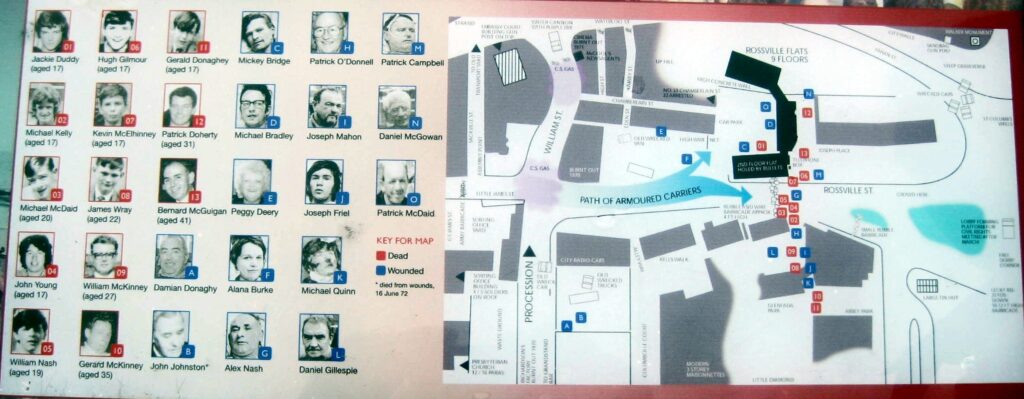
Photos from Demonstration:
How Bloody Sunday unfolded – in pictures (The Guardian, 28 January 2022). “As Derry prepares to mark the 50th anniversary of Bloody Sunday, we revisit the archive to show how the day unfolded on 30 January 1972, when British paratroopers opened fire on a civil rights march and ended up killing 14 civilians.”
Se også på Socialistisk Bibliotek:
- Emneoversigten: Irland / Ireland
- Emneoversigten: Storbritanien / Great Britain
- Tidslinjen: 5. oktober 1968, om første borgerrettighedsmarch i Derry, Nordirland (Socialistisk Bibliotek)
- Tidslinjen: 15. august 1969, om indsættelse af britiske tropper i Nordirland.
Videofilm og sange
Om filmen Bloody Sunday:
Bloody Sunday 2002 – written and directed by Paul Greengrass (YouTube.com, 1:39:45 h.)
Bloody Sunday (TV film) (Wikipedia.org)
Two films mark thirtieth anniversary of Bloody Sunday. By Paul Bond (World Socialist Web Site, 21. feb. 2002).
Bloody Sunday: Rare actual footage of how it all unfolded (30 Januar 1972, Derry, Northern Ireland) (YouTube, 6:30 min.)
Om sangen Sunday, Bloody Sunday U2:
Sunday, Bloody Sunday (Sangtekst, U2): se video:
Om sangen Sunday Bloody Sunday John Lennon:
John Lennon: Sunday Bloody Sunday (YouTube.com, 4:29 min.)
Tekst til John Lennons “Sunday Bloody Sunday
